Why you can trust Tom's Hardware
Advanced Transient Response Tests
For details about our transient response testing, please click here.
In the real world, power supplies are always working with loads that change. It's of immense importance, then, for the PSU to keep its rails within the ATX specification's defined ranges. The smaller the deviations, the more stable your PC will be with less stress applied to its components.
We should note that the ATX spec requires capacitive loading during the transient rests, but in our methodology, we also choose to apply a worst case scenario with no additional capacitance on the rails.
Advanced Transient Response at 20% – 20ms
| Voltage | Before | After | Change | Pass/Fail |
| 12V | 12.030V | 11.939V | 0.75% | Pass |
| 5V | 5.045V | 4.943V | 2.02% | Pass |
| 3.3V | 3.340V | 3.213V | 3.80% | Pass |
| 5VSB | 5.057V | 5.002V | 1.10% | Pass |
Advanced Transient Response at 20% – 10ms
| Voltage | Before | After | Change | Pass/Fail |
| 12V | 12.029V | 11.941V | 0.73% | Pass |
| 5V | 5.044V | 4.942V | 2.01% | Pass |
| 3.3V | 3.340V | 3.213V | 3.81% | Pass |
| 5VSB | 5.055V | 5.006V | 0.97% | Pass |
Advanced Transient Response at 20% – 1ms
| Voltage | Before | After | Change | Pass/Fail |
| 12V | 12.029V | 11.949V | 0.67% | Pass |
| 5V | 5.043V | 4.943V | 1.98% | Pass |
| 3.3V | 3.339V | 3.212V | 3.82% | Pass |
| 5VSB | 5.054V | 5.020V | 0.68% | Pass |
Advanced Transient Response at 50% – 20ms
| Voltage | Before | After | Change | Pass/Fail |
| 12V | 12.019V | 11.955V | 0.53% | Pass |
| 5V | 5.028V | 4.931V | 1.93% | Pass |
| 3.3V | 3.335V | 3.203V | 3.96% | Pass |
| 5VSB | 5.060V | 5.014V | 0.92% | Pass |
Advanced Transient Response at 50% – 10ms
| Voltage | Before | After | Change | Pass/Fail |
| 12V | 12.019V | 11.957V | 0.51% | Pass |
| 5V | 5.026V | 4.954V | 1.44% | Pass |
| 3.3V | 3.334V | 3.236V | 2.94% | Pass |
| 5VSB | 5.061V | 5.043V | 0.36% | Pass |
Advanced Transient Response at 50% – 1ms
| Voltage | Before | After | Change | Pass/Fail |
| 12V | 12.019V | 11.953V | 0.55% | Pass |
| 5V | 5.027V | 4.921V | 2.10% | Pass |
| 3.3V | 3.334V | 3.200V | 4.02% | Pass |
| 5VSB | 5.061V | 5.022V | 0.78% | Pass |




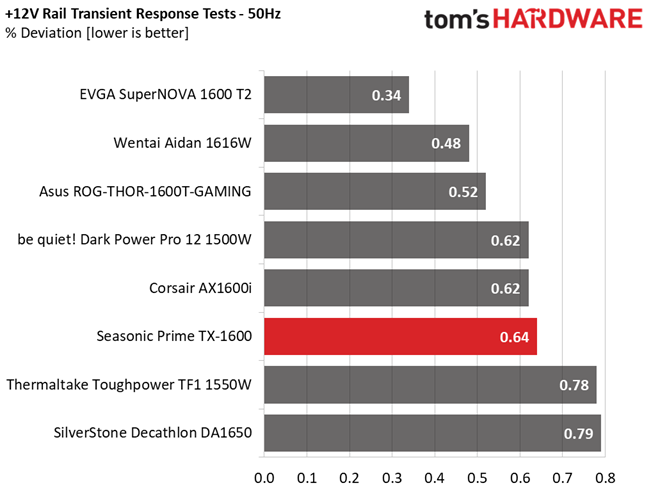



Transient response is good at 12V and 5VSB, and average on the minor rails.
Turn-On Transient Tests
In the next set of tests, we measure the PSU's response in simpler transient load scenarios—during its power-on phase. Ideally, we don't want to see any voltage overshoots or spikes since those put a lot of stress on the DC-DC converters of installed components.
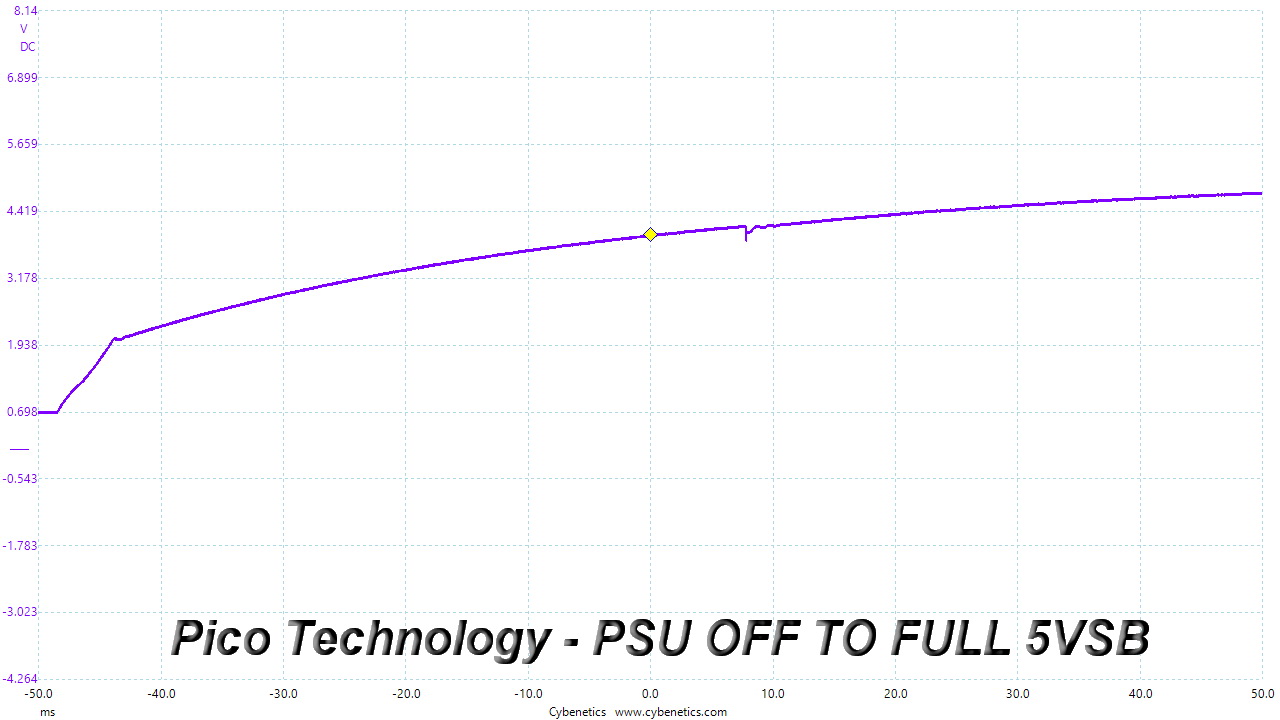


The 5VSB rail takes some time to settle down. Still, it is way below the maximum allowed, which according to the ATX spec, is 2 seconds. We didn't notice anything peculiar on the 12V rail in both turn-on transients we conducted. The slope in the "PSU off to full 12V" could be smoother, but it won't create any issues as it is.
Power Supply Timing Tests
There are several signals generated by the power supply, which need to be within specified, by the ATX spec, ranges. If they are not, there can be compatibility issues with other system parts, especially mainboards. From year 2020, the PSU's Power-on time (T1) has to be lower than 150ms and the PWR_OK delay (T3) from 100 to 150ms, to be compatible with the Alternative Sleep Mode.
Get Tom's Hardware's best news and in-depth reviews, straight to your inbox.
| T1 (Power-on time) & T3 (PWR_OK delay) | ||
|---|---|---|
| Load | T1 | T3 |
| 20% | 37ms | 127ms |
| 100% | 41ms | 126ms |

PSU Timing Charts



The PWR_OK delay is within the 100-150ms region, so the PSU supports the alternative sleep mode recommended by the ATX spec.
Ripple Measurements
Ripple represents the AC fluctuations (periodic) and noise (random) found in the PSU's DC rails. This phenomenon significantly decreases the capacitors' lifespan because it causes them to run hotter. A 10-degree Celsius increase can cut into a cap's useful life by 50%. Ripple also plays an important role in overall system stability, especially when overclocking is involved.
The ripple limits, according to the ATX specification, are 120mV (+12V) and 50mV (5V, 3.3V, and 5VSB).
| Test | 12V | 5V | 3.3V | 5VSB | Pass/Fail |
| 10% Load | 12.5 mV | 4.0 mV | 4.4 mV | 25.6 mV | Pass |
| 20% Load | 10.7 mV | 4.3 mV | 4.3 mV | 10.0 mV | Pass |
| 30% Load | 10.0 mV | 3.9 mV | 4.5 mV | 23.8 mV | Pass |
| 40% Load | 10.6 mV | 4.5 mV | 4.7 mV | 14.9 mV | Pass |
| 50% Load | 10.9 mV | 4.1 mV | 4.7 mV | 10.0 mV | Pass |
| 60% Load | 10.9 mV | 4.8 mV | 4.6 mV | 17.2 mV | Pass |
| 70% Load | 11.1 mV | 5.7 mV | 4.9 mV | 15.6 mV | Pass |
| 80% Load | 11.8 mV | 6.1 mV | 10.1 mV | 17.1 mV | Pass |
| 90% Load | 12.0 mV | 5.8 mV | 11.2 mV | 16.2 mV | Pass |
| 100% Load | 16.5 mV | 6.2 mV | 11.4 mV | 14.2 mV | Pass |
| 110% Load | 17.6 mV | 5.7 mV | 12.0 mV | 16.5 mV | Pass |
| Crossload 1 | 17.4 mV | 5.2 mV | 13.0 mV | 7.0 mV | Pass |
| Crossload 2 | 14.6 mV | 6.1 mV | 6.0 mV | 6.0 mV | Pass |
| Crossload 3 | 8.5 mV | 4.6 mV | 15.7 mV | 5.8 mV | Pass |
| Crossload 4 | 16.2 mV | 5.7 mV | 5.6 mV | 9.3 mV | Pass |




Ripple suppression is fantastic!
Ripple At Full Load


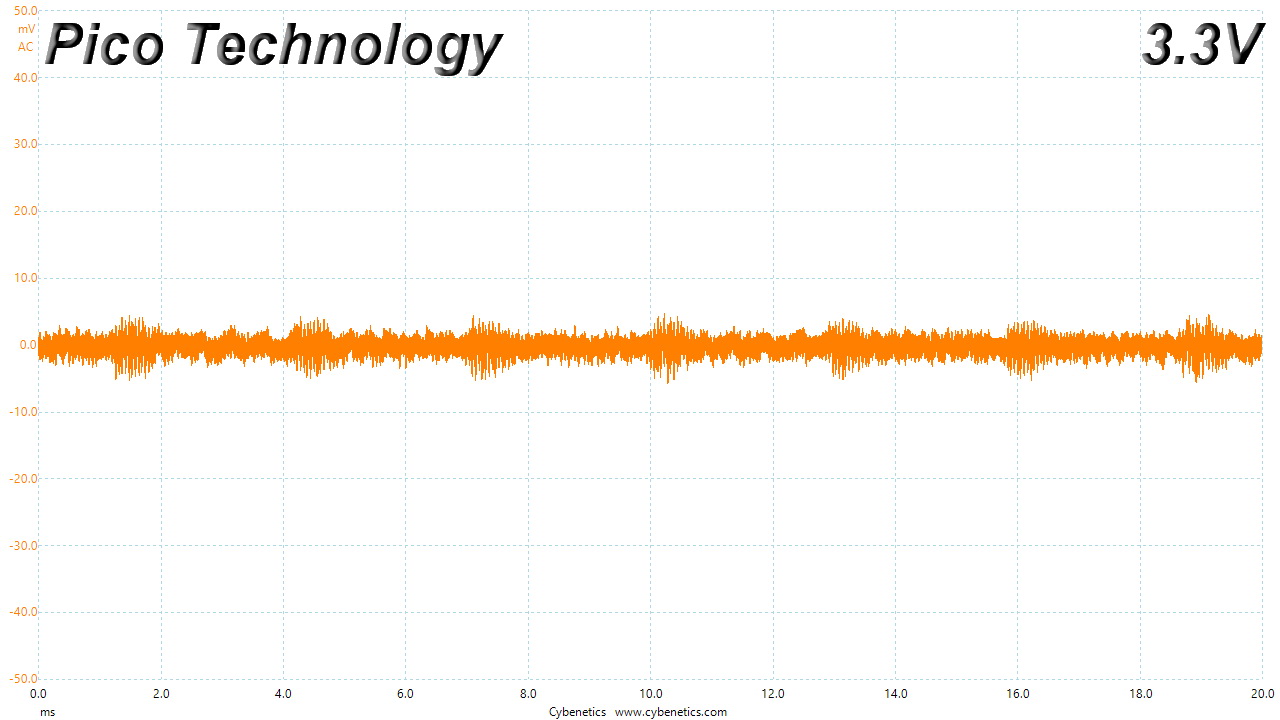

Ripple At 110% Load


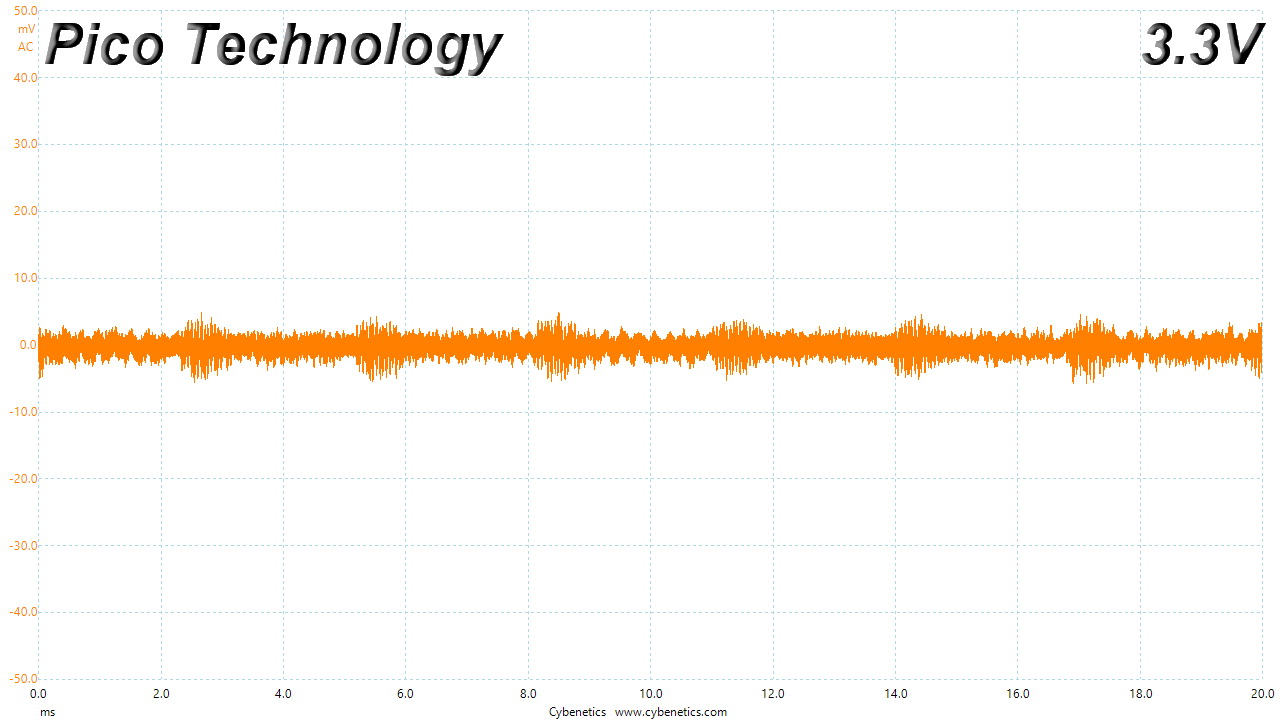
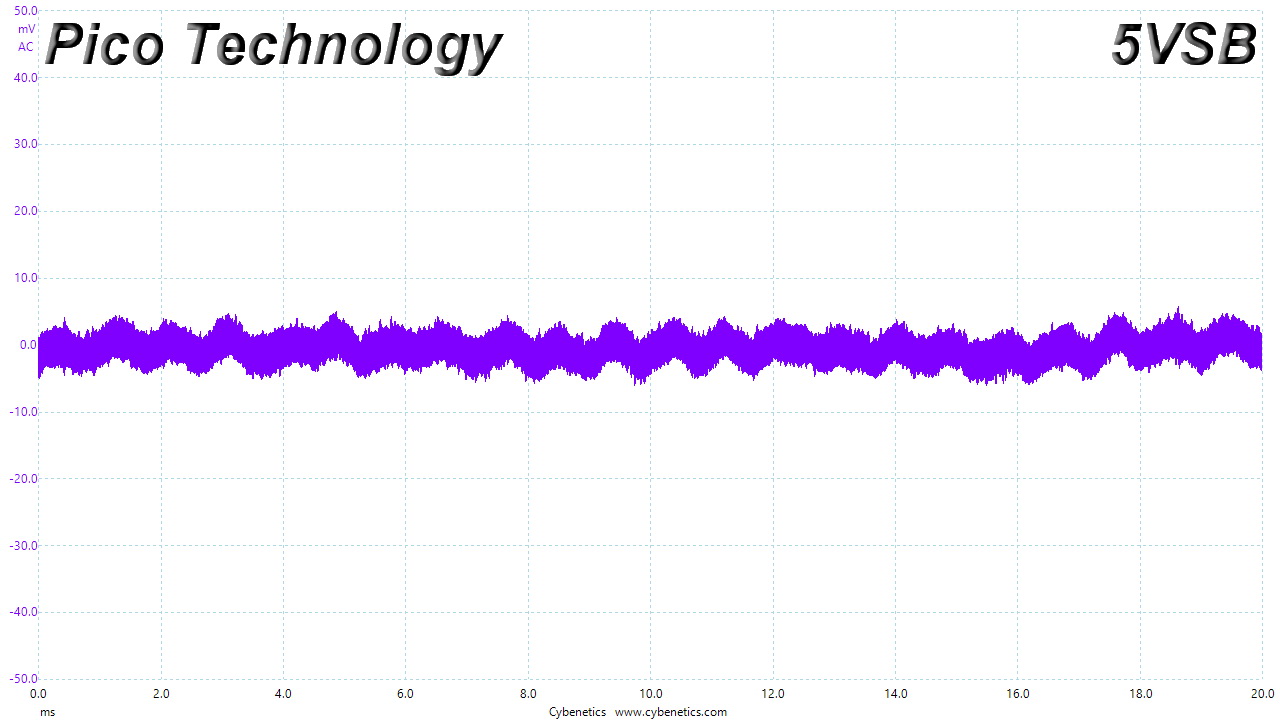
Ripple At Cross-Load 1



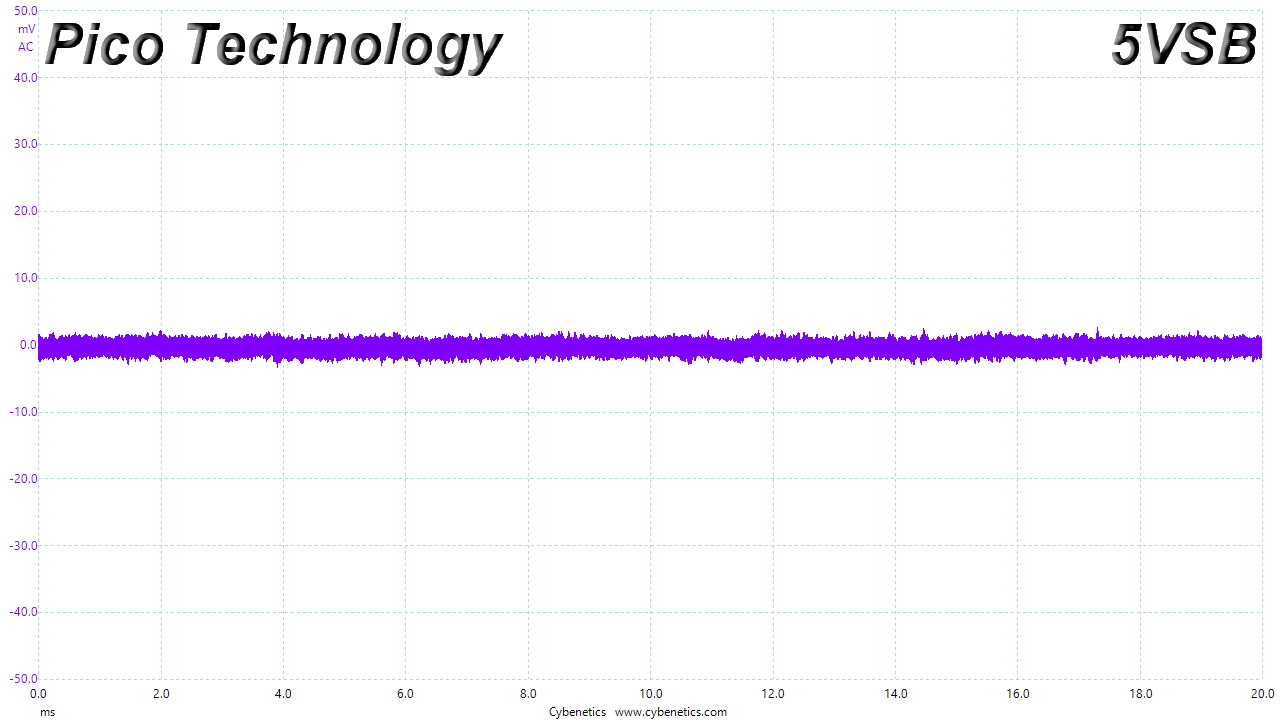
Ripple At Cross-Load 4

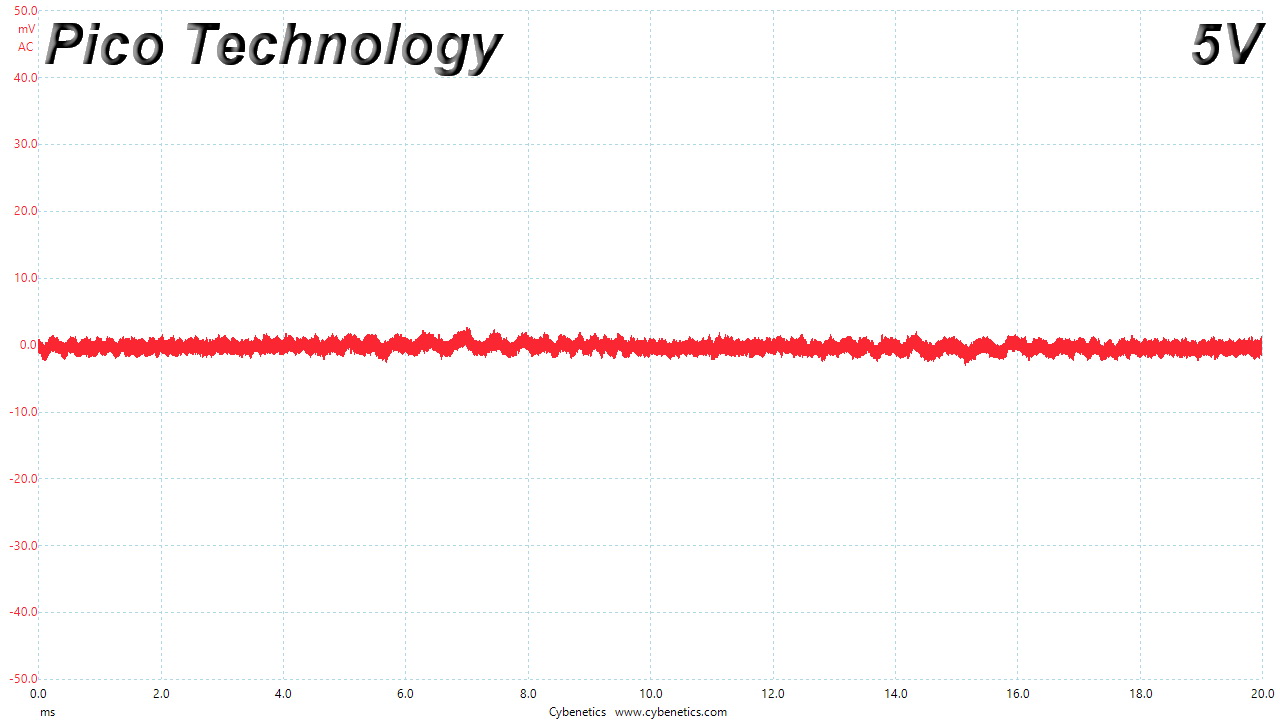

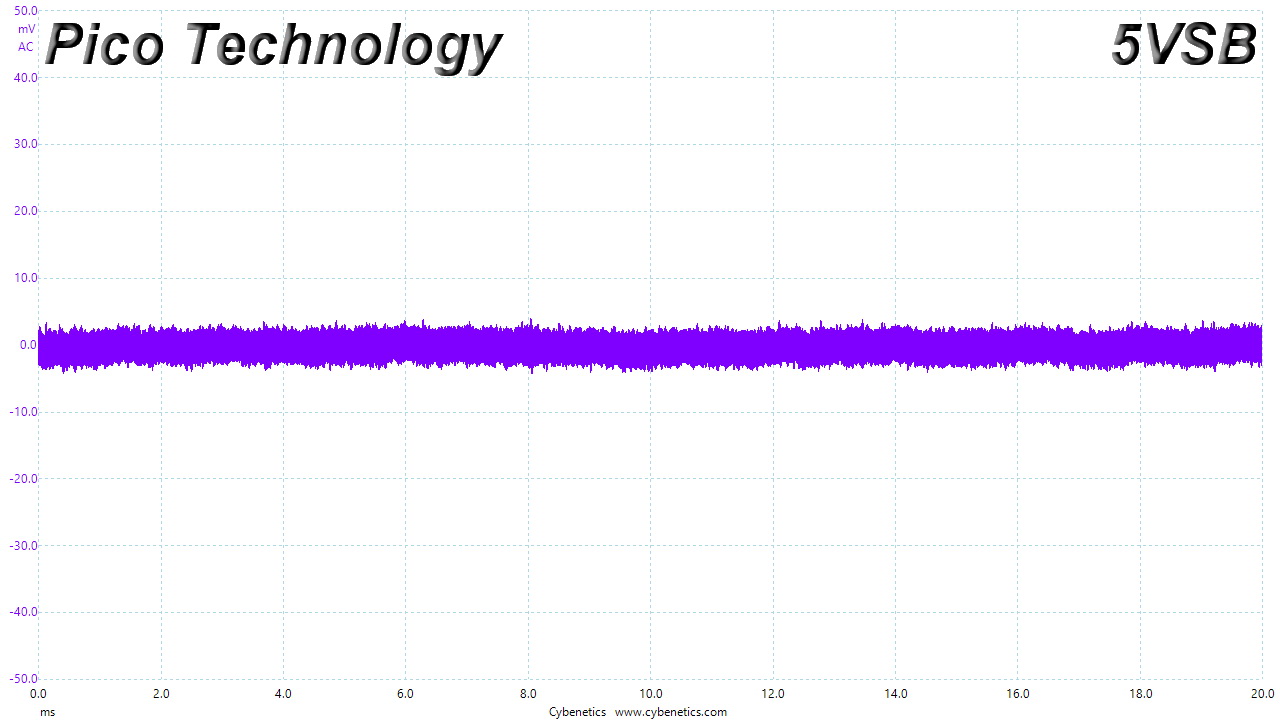
EMC Pre-Compliance Testing – Average & Quasi-Peak EMI Detector Results
Electromagnetic Compatibility (EMC) is the ability of a device to operate properly in its environment without disrupting the proper operation of other nearby devices.
Electromagnetic Interference (EMI) stands for the electromagnetic energy a device emits, and it can cause problems in other nearby devices if too high. For example, it can cause increased static noise in your headphones or/and speakers.
΅We use TekBox's EMCview to conduct our EMC pre-compliance testing.
EMI emissions are low.
MORE: Best Power Supplies
MORE: How We Test Power Supplies
MORE: All Power Supply Content
Current page: Transient Response Tests, Timing Tests, Ripple Measurements and EMC Pre-Compliance Testing
Prev Page Protection Features, DC Power Sequencing, Cross-Load Tests and Infrared Images Next Page Performance, Noise, Efficiency and Power Factor
Aris Mpitziopoulos is a contributing editor at Tom's Hardware, covering PSUs.
-
watzupken Not unexpected coming from the Seasonic Prime series. However, the lack of ATX 3.0 is going to affect its take up rate. Most people buying a 1.6K W PSU are likely enthusiasts that will want the latest and greatest. This is great, but clearly not the latest.Reply -
escksu 1600W is definitely overkill for most. For the rest of us, a good 600-800W will be sufficient.Reply -
jeremyj_83 Every single time people think that Seasonic will have to go with digital circuits to reach requirements they figure out how to do it with analog circuits. It is amazing that they are able to get the same or better performance using analog circuits compared to most other high end PSUs using digital circuits.Reply -
infopcX Thanks very much for review, amazing work !!!Reply
can we say that this is the second best source money can buy? just behind the Corsair AXi 1600 ?
power factor could be better, in practice compared to the AXi would be imperceptible? would even values below 1% in efficiency be relevant? I say in practice
I would like to know how much we could extract from the Seasonic source? up to 110% Load seemed pretty stable, could we go further with it?
12 years warranty is a plus
Best Regards, -
BoredErica Reply
ax1600i is more aggressive with fan curve vs Seasonic.infopcX said:Thanks very much for review, amazing work !!!
can we say that this is the second best source money can buy? just behind the Corsair AXi 1600 ?
power factor could be better, in practice compared to the AXi would be imperceptible? would even values below 1% in efficiency be relevant? I say in practice
I would like to know how much we could extract from the Seasonic source? up to 110% Load seemed pretty stable, could we go further with it?
12 years warranty is a plus
Best Regards,
